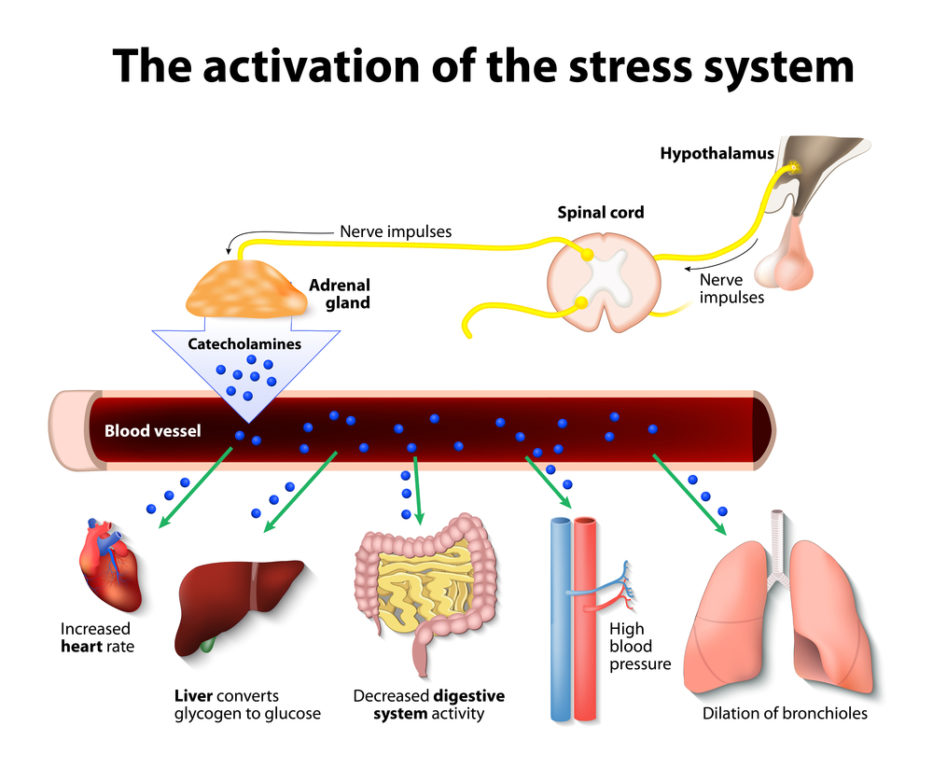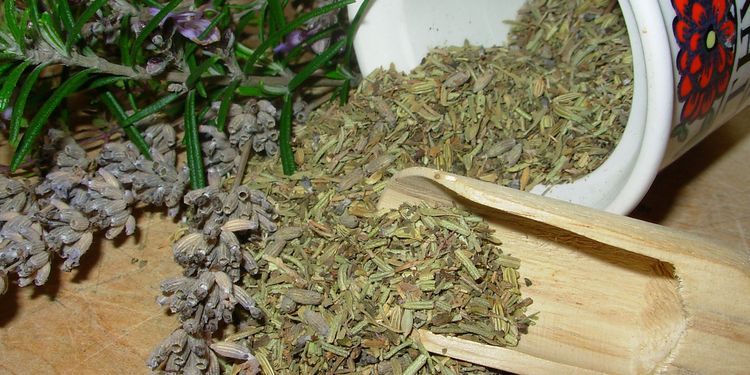9 Stress Management Tools For The Modern World

Let me tell you about my friend Jennie. Jennie is a successful, career-oriented gal who also happens to be the mother of two young kids. She wakes up at 5:45 every morning and comes home at 5:45 every evening. She balances spreadsheets, runs meetings and prepares meals for her family. What she doesn’t do is take great care of herself. She’s constantly stressed. On our last ‘girls’ night out,’ Jennie couldn’t put her phone down for a minute, out of fear that her house would burn down or her boss would chew her out for being off the clock for even an hour.
If this sounds even remotely familiar to you, then you’re not weird. In fact, you’re one of the millions of people navigating our modern, stress-filled world. In this day and age, we’re constantly bombarded with things that must get done – work demands, shuttling kids around, cleaning the house, paying bills, trips to the grocery store, cooking, caring for pets, yard-work and if there’s time, exercise and eating right! The list just doesn’t end. No wonder we’re all stressed out.
The examples listed above are the obvious sources of stress , but what many of us don’t consider are the hidden and less obvious ones, such as infections, poor diet, food sensitivities, toxins, hormone imbalance, injury, or surgery. Anything that disrupts the body’s balance (homeostasis) will cause stress.
Your body doesn’t easily differentiate the various types of stressors, it only senses the imbalances and responds accordingly – if it can. So the nervous system’s response to a fight with your spouse is processed much in the same way that an infection or a food sensitivity would be.
Chronically elevated stress levels can really take a toll on you, both physically and emotionally, and can absolutely be detrimental to your health. Dr. Mark Hyman says, “Chronic stress has become an epidemic in our society where faster is better and we attempt to pack more obligations into our ever-expanding schedules.”4
Unmanaged chronic stress can result in poor sleep and concentration, irritability, fatigue, sugar and caffeine cravings, insulin resistance, immune dysfunction, leaky gut, thyroid dysfunction, imbalanced hormones, low testosterone, belly fat, and more.
Ultimately, psychological stress tends to form when we give meaning and assign emotions to something – a relationship, finances, or our life’s purpose. Each of us has the power to choose the way we think, and by changing our thinking and mastering our emotions, we have the power to reduce stress. That break-up, while sad, may provide you with opportunities to be in a fulfilling relationship, freedom to explore if you’re not tied down, and so on. Actively managing avoidable chronic stress can be a great way to mitigate harmful long-term health effects.

The Imbalanced Stress Response
The stress response is controlled by the autonomic nervous system, which is involuntary and has two branches that need to be balanced in the long term to keep us healthy.
First, the parasympathetic nervous system provides the “rest and digest” response. This is the calming branch most of us should be activating more often, as it’s responsible for many health benefits related to recovery, digestion, and procreation.
The opposing side is the sympathetic nervous system, or the “fight or flight” response. This branch is responsible for optimizing our physiological response to acute stress. Its primary purpose is to help us flee or fight off predators. During a sympathetic nervous response, blood pressure increases as the blood moves out of the reproductive and digestive organs and into the limbs and brain. Your pupils dilate, salivary glands shut off, and digestion is reduced. Body temperature rises, the muscles and brain are primed with increased blood flow, oxygen, and glucose, you get tunnel vision, and you become ready to take on any challenges you face.
This shuffle of biochemical processes allows for quick life-or-death decisions. The optimal function of this response occurs in an acute fashion, thus allowing the body to spend most of the time in parasympathetic activation. Short-term stress in the right circumstances can actually be beneficial, as it’s in sync with the natural fight or flight response. A quick jolt of stress followed by a period of rest can help you meet work deadlines or study for exams. Short-term stress can boost brain power, increase immunity, make you more resilient, or motivate you to succeed.1,2
Unfortunately, many of life’s stresses trigger this response too often, leaving us in a permanent state of elevated sympathetic response. Serious health conditions can be proceeded by chronic stress and the constant sympathetic activation, including anxiety, insomnia, muscle pain, high blood pressure, poor blood sugar response, a weakened immune system, and leaky gut.3

1. Know How You Respond to Stress
Knowing a few things about yourself will help you understand how to manage stress better.
First, identify what exactly is causing your stress. There’s a lot of hidden stress people don’t consciously recognize that can reduce your ability to juggle all the challenges in life.
Second, identify how you initially react to stress. Are you proactive or reactive to stressful situations? Reactivity occurs without thought and produces a reaction in response to what occurred. Proactivity allows you to modify your behavior or mindset during a stressful situation.
Stress reactivity is particularly harmful, and you might notice that your “blood begins to boil.” You might have a hard time controlling the tone or volume of your voice. Your head might feel warm, or you may realize you can’t think clearly. This isn’t a healthy or productive use of the stress response.
You can start to change this by examining those sensations and your immediate thoughts during a stressful situation. You can then transition from reactive to proactive by focusing your attention on what you’re experiencing at that moment. Become aware of how your emotions affect your body. Then make a conscious decision about how to react to the situation. This gives you control over your stress response. Doing this can cause significant physiological changes for the better by actively disengaging your sympathetic response.

2. Practice Deep Breathing
Breathing mindfully takes practice. We often breathe in a rapid, shallow manner, not using full lung capacity when we’re stressed out. Rapid breathing is controlled by the sympathetic nervous system and is activated by stress.
The vagus nerve is perhaps the most important part of the solution, as proper activation is required to calm you down. Deep breathing is one of the quickest ways to activate the vagus nerve, triggering the relaxation response.
Vagal stimulation counteracts your sympathetic nervous system by reducing heart rate and blood pressure. Enzymes and hormones such as acetylcholine, prolactin, vasopressin, and oxytocin are released, which relaxes you.8 Vagus nerve stimulation is also associated with improved memory, balanced immune function, better sleep, and higher levels of growth hormone.9,10 It may also help tame inflammation, allergic responses, and tension headaches.11
Deep breathing with the belly is the most effective method of engagement. Breathe using your diaphragm so that your abdomen expands, not your chest. Focus on letting go of your thoughts and hone in on your breath.
Breathe in deeply through your nose for 5 seconds, hold for 5 seconds, and exhale for 5 seconds. Repeat this until you notice a calming sensation – usually after just a few repetitions. The end goal is to gradually reduce the number of breaths per minute and relax.
Research shows that breathing methods can even change the expression of genes. By using breath, you can alter the basic activity of your cells with your mind by creating a genetic response that counteracts the harmful epigenetic effects of chronic stress.6
Yoga and meditation both incorporate deep breathing and can be a great way to put this breathing practice to use. Some have found it helpful to make deep breathing a daily practice on their commute to work or before bed to promote restful sleep.

3. Meditation
When feeling trapped in a stressful situation, you might have the urge to escape (“flight”). Escape is always an option through meditation. Meditation only needs three components to be successful: simplicity, comfort, and results that make you want to keep doing it.
As far as the details go, whatever works for you is the right approach, and you have plenty of options to choose from. The basics of meditation require you to sit or lie down and breathe, but hand gestures and sound may be included. Try these meditation techniques to start:
Mindfulness-Based Stress Reduction: This technique uses both breath awareness and a body scan. Breath awareness is as simple as it sounds—you focus your attention on inhalation and exhalation. Body scan is a process of focused attention on the physical body, starting at the toes and working your way up to your head, with heightened awareness and the potential for release or relaxation of tension. Mindfulness meditation-based stress reduction interventions have also been helpful long-term as a treatment for people with anxiety disorders.7
Zen: Literally means “seated meditation.” It comes from Buddhism, which is more of a philosophy than a religion. You acquire insight through observing the breath and the mind. The essence of Zen is to “not think” – that is, to go beyond thinking. Various thoughts and images will arise in your mind from the unconscious during Zen, and this is perfectly natural. Don’t become involved in those thoughts. Don’t pursue them or try to escape from them.
Chocolate Meditation: If you’re not totally sold on meditation but love chocolate, try chocolate meditation! Yes, you read that correctly. As Dr. Sara Gottfried puts it, “Get yourself a square of 80% cacao and take a deep breath into your lower belly. That’s extra dark chocolate, and it’s been shown to lower your cortisol level, that bad-boy stress hormone.” Step 1: Put chocolate square in mouth. Step 2: No chewing. Step 3: Enjoy!
If you can’t avoid technology, tools like Inner Balance from HeartMath can help you as well.

4. Exercise
On one end of the spectrum, the deep breathing often practiced in yoga will activate the parasympathetic nervous system. However, other types of physical activity can help with stress management too.
The right type of exercise is important, though, as current research suggests that long cardio sessions aren’t the best type of exercise to manage stress. Endurance exercise is especially damaging because of its activation of cortisol (seen in marathon runners and endurance athletes).
Cortisol is normally released in a specific rhythm throughout the day. It should be high in the mornings to help you wake up and gradually reduce throughout the day as melatonin increases, so you feel tired at bedtime. Chronic stress and overtraining can not only increase cortisol levels but also disrupt the natural cortisol rhythm. A broken cortisol rhythm will wreak havoc on your body.
Chris Kresser points out that too much cardio exercise has a number of harmful effects on the body, such as increased oxidative damage and inflammation, depression of the immune system and fat metabolism, cortisol disruption, and neurodegeneration.
An ancestral approach to exercise is a better choice and incorporates frequent low-intensity movements with brief periods of high-intensity activity. Examples of moving frequently at low-intensity movements include walking, cycling, gardening, and hiking. An added bonus is that these activities can get you outside (which offers its own benefits).
This mimics our ancestral pattern of movement, improves mood state, helps maintain a healthy weight, promotes proper metabolic function and provides a foundation for more strenuous activity. Walking is one of the easiest things to do for reducing stress, and if you have a sedentary job, walking is one of the best things you can do throughout your day. Walking gives your brain a break and increases oxygen flow. The break from work can also enhance creativity and improve problem-solving skills.
Here are some tips to sneak in walking throughout the day:
Put Walking Appointments on Your Work Calendar: Walking once per hour, even if it’s only for a minute or two, regains health benefits that are lost by sitting.
Make Meetings Mobile: Discuss important work matters while walking around at work instead of sitting in a conference room.
In contrast to low-intensity movements, high intensity for short periods of time (between 30 seconds and 2 minutes; known as high intensity interval training, or HIIT) is a great form of exercise. A pair of studies found that “6 minutes of pure, hard exercise once a week could be just as effective as an hour of daily moderate activity.” The HIIT resulted in unique changes in skeletal muscle and endurance capacity that were previously believed to require hours of exercise each week.16
Another study comparing HIIT to conventional endurance exercise found that even though the conventional endurance exercise group spent 97.5 percent more time engaged in exercise, both groups of subjects improved to the same degree. In other words, the group that exercised 97.5 percent more received no additional benefit whatsoever from doing so.17
This news is important, since most people find that the biggest barrier that prevents exercise is lack of time. Now we know you can earn equivalent physical benefits in just a fraction of the time. Now you can burn off stress, enhance your mood, and build muscle in as little as 6 minutes per week.
Lifting moderate to heavy weights 2-3 times per week is also a good approach to stress reduction, since it’s not as taxing on cortisol levels. If you exercise regularly, be sure to take an appropriate amount of rest days.

5. Nourish Your Body
Cravings for junk food can feel intense during stressful moments, as they provide the little mood boost that might be innately desired during episodes of stress.
As much as junk foods can be desired during stressful times, they offer nothing valuable for the body and can actually create more problems down the road.
Low blood sugar following consumption of high sugar food creates symptoms of shakiness, irritability, dizziness, hunger, headaches, sweating, trembling, and anxiety.
Trans fats, artificial colors, monosodium glutamate (MSG), artificial sweeteners, and other synthetic ingredients in junk food are also linked to irritability and poor mood. In addition, not drinking enough water stresses the body and causes increased cravings for unhealthy foods, tiredness, headaches, irritability, and decreased concentration.
Stress can even be stimulated by certain foods we eat. For instance, let’s say you had coffee and a muffin for breakfast. The caffeine in coffee increases catecholamines—hormones that elicit the stress response by increasing cortisol, coupled with the high levels of sugar in the muffin, which increases insulin. Insulin boosts inflammation and makes you feel lousy, and the sugar in the muffin increases cortisol and adrenaline, literally jacking up your stress hormones, even if you’re not stressed.4
A study showed that in response to low blood sugar, it was the stress hormones that had the biggest direct effect on the brain, not the observed changes in insulin, ghrelin, or other hormones associated with hunger.5 A high-sugar, high-caffeine, high-stress life can be a trifecta for a health disaster! Keeping your house and work stocked with healthy foods like roasted nuts, seeds, and sliced veggies may be helpful in avoiding convenient and unhealthy snacks.
Eating healthy foods has also been proven to help manage stress. Here are some super-foods for fighting stress:
Dark Leafy Greens: Rich in folate, which helps your body produce mood-regulating neurotransmitters, including serotonin and dopamine. One 2012 study found people who consumed the most folate had a lower risk of depression than those who ate the least.12 The University of Otago found eating vegetables helped young adults calm their nerves.13
Fermented Foods and Probiotics: Beneficial bacteria have a direct effect on brain chemistry, transmitting mood and behavior-regulating signals to your brain via your vagus nerve. The particular probiotic Lactobacillus rhamnosus was found to have a marked effect on GABA levels in certain brain regions and lowered the stress-induced hormone corticosterone, resulting in reduced anxiety and depression-related behavior.14
High Omega-3 Foods: Animal-based omega-3 fats EPA and DHA from salmon, sardines, and anchovies play a role in brain health and influence perceived stress.15
Blueberries and Blackberries: Anthocyanins are the pigments that give berries like blueberries and blackberries their deep color. These antioxidants aid your brain in the production of dopamine, a chemical that’s critical to coordination, memory function, and your mood.18
Dark Chocolate: In dark chocolate, there’s a chemical called anandamide, a neurotransmitter produced in the brain that temporarily blocks feelings of pain and depression.19

6. Herbs and Supplements
The body’s response to stress and its ability to cope with anxiety and fatigue can be strengthened with specific herbs, known as adaptogens.
Adaptogens are a unique group of herbal ingredients used to improve the health of your body’s hormonal response to stress, called the hypothalamic-pituitary-adrenal axis. They’re called adaptogens because of their unique ability to “adapt” their function according to your body’s specific needs.
Ashwagandha: This has been used for thousands of years in Ayurvedic medicine. Ayurvedic healers have long prescribed the herb to treat exhaustion brought on by both physical and mental strain. Ashwagandha is used to help increase vitality, energy, endurance, and stamina, as well as promote longevity and strengthen the immune system.26
Asian Ginseng: For thousands of years, Asian ginseng has been one of the most valued medicinal plants in the world. It helps the body withstand stress.27
Rhodiola: Rhodiola helps balance the cortisol levels in your body, raising or lowering it as needed to get cortisol back into a normal rhythm.28,29,30
Vitamin B and C Complex: These nutrients are essential to adrenal health, since they’re cofactors in hormone synthesis and adrenal function.

7. Rediscover Nature
Spending time outdoors reduces stress, increases vitamin D levels, and brings us pleasure, joy, and a sense of connection with the world around us. Sunshine and skin contact with the earth can bring us major benefits.
Sunshine: A daily dose of sunshine might help stabilize your mood—the natural rhythm of hormones (circadian rhythm) follows the pattern of the sun. Serotonin, the brain hormone associated with mood elevation, rises with exposure to bright light and falls with decreased sun exposure. Lack of natural light and excess artificial light can alter melatonin levels, causing disrupted sleep patterns that can leave you extra tired in the morning.
Exposing your eyes to a minimum of 20 minutes of sunlight in the morning can ensure that you’re keeping your serotonin and melatonin in rhythm. Sunshine is also the best source of vitamin D for the body. Low levels of vitamin D have been linked to depression, increased risk for panic disorder, and increased inflammation.20, 21, 22
Sunlight also has pain-killing and stress reduction properties. Hospital patients exposed to an increased intensity of sunlight experienced less perceived stress, took 22% less analgesic medication per hour, and had 21% less pain medication costs.23
Earth Contact: Grounding is a term also known as earthing, which is the practice of making direct physical contact with the surface of the earth in order to connect with the free electrons that are constantly generated.24 Earthing has shown cortisol-lowering effects.
Grounding the human body during sleep reduces night-time levels of cortisol and re-synchronizes cortisol hormone secretion more in alignment with the natural 24-hour circadian rhythm. Subjective reporting indicates that grounding the human body to earth during sleep improves sleep and reduces pain and stress.25
Walking barefoot outside or sitting in the grass is an effective way to ground. Grass, sand, dirt, and concrete are all conductive surfaces from which your body can draw the Earth’s electrons.

8. Sleep
Of any tool that you have in your arsenal, sleep might be the most important for restoring your body. During deep sleep is when healing, hormone production, and tissue regeneration occur.
Stress and adrenal function affect sleep, especially the circadian pattern of the hypothalamus. Cortisol rises and falls throughout the day, peaking at 8am and dipping at 4am, and maintaining this pattern is important for proper sleep.
Going to bed at the same time every night and awakening (preferably on your own) at the same time each morning will help maintain this pattern. Upon rising, exposing yourself to sunlight for 20-30 minutes will reinforce the cortisol awakening response (CAR), which occurs about 30 minutes after you wake up.31 At this time your cortisol levels increase by 50% to get you ready for the day. The CAR influences sleep, hormone production, and immune function.31
To get some seriously restorative benefits, read our post on optimal sleep habits. In short, there are a few key things to focus on.
Stay away from blue light and electronics after sundown. The blue light part of the spectrum shuts down melatonin production and will keep you awake. Try using a screen filter on your electronic devices, such as F.lux. You could also wear these blue light-blocking beauts.
Unplug electronics in the bedroom and put your phone in airplane mode (gasp, who would do such a thing!). Also make sure you sleep in a cold, dark, and quiet room for the best quality of sleep.
Your body does its best regeneration and healing between 12 and 2 a.m., so it’s important to get to bed around 10 p.m., which will allow your body to reach this sleep stage. If you go to bed later, this doesn’t happen to the degree it should, since it’s based on circadian rhythm. Aim for at least 8-9 hours total.

9. Boundaries
Sometimes a stressor feels like it’s out of our control. The truth is that it probably is to some degree, but there are aspects that we do have influence on. Here are a few things to explore:
Learn to Say No: This is empowering and healing, since often we say “yes” out of obligation, guilt, or fear, even when we don’t want to do something. Saying “no” honors both yourself and the requester by being honest and setting realistic expectations.
Create Boundaries: If there’s someone or something in your life causing stress, take the appropriate steps to eliminate it if possible, or at least minimize interaction or exposure so it’s more tolerable.
Get Organized: Plan some time in your day to get organized. De-cluttering your space can help you focus and concentrate.
Don’t Delete Personal Time: Working too much can cause you to be less productive. Take breaks, like going for a quick walk or socializing with co-workers. Even a 5 minute break can calm your mind and relax you, which has a large impact on your stress and concentration levels and increases your productivity, creativity, and efficiency at work. Be sure to enjoy weekends and take vacations to decompress.
Minimize Interruptions: Check your phone or emails only at specific times during your day instead of each time you receive something. You’ll feel more focused and less stressed.
Time Management: Create lists and prioritize the top 3 things to accomplish today, but limit your list to a manageable amount. Write down what you’re carrying over to the next day. Make a commitment to yourself for self-care and give it priority too. Take a break when lacking focus.
With this myriad of tools now floating around your mind, you’re well on your way to de-stressing. But don’t go out and start stressing about implementing de-stressing techniques! Take things one day at a time and cut yourself some slack. Breathe through the stress and know that Rome wasn’t built in a day. If you start by making subtle changes today, you’ll be in an incredible, far less stressed-out place in no time flat.
